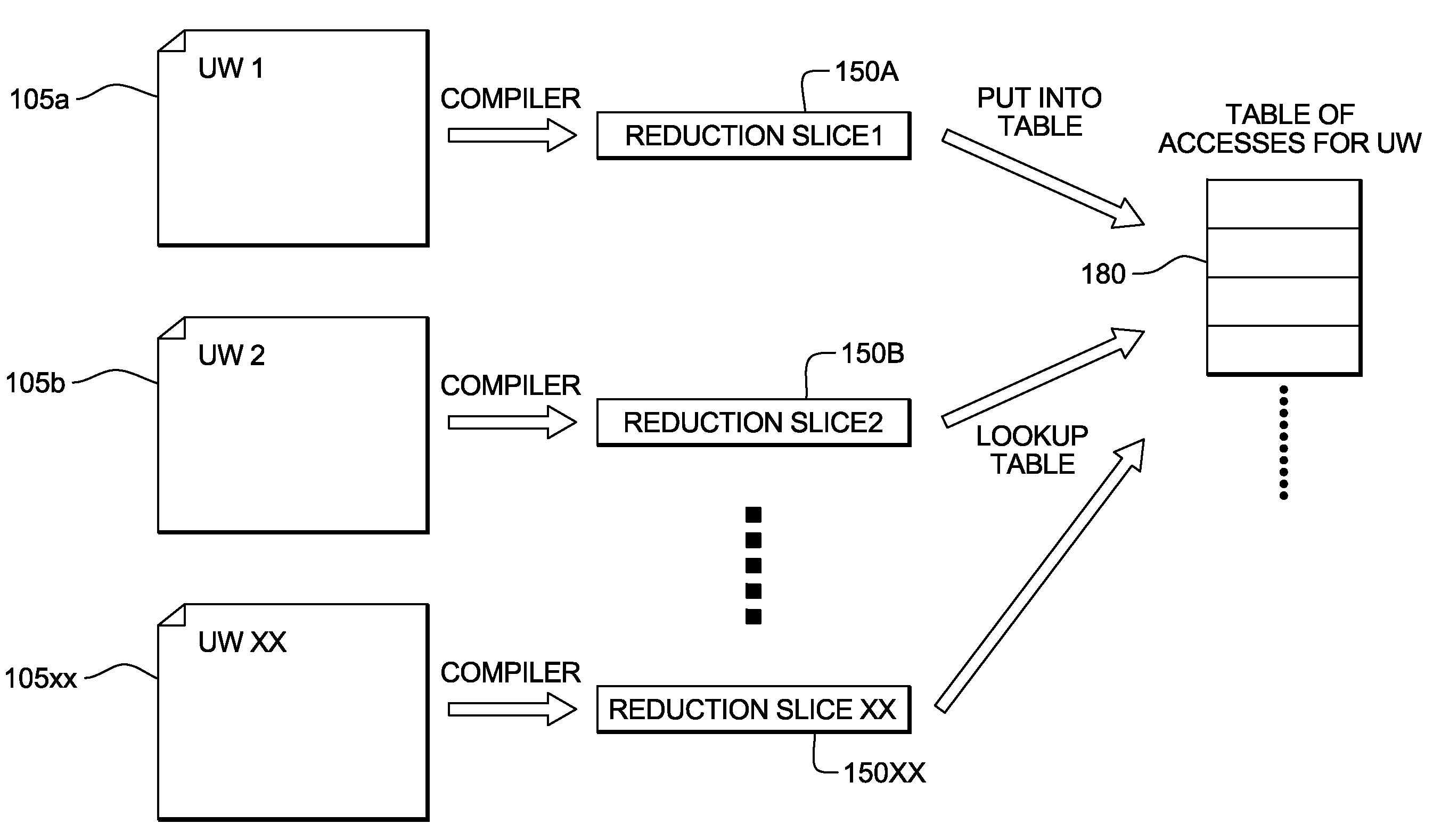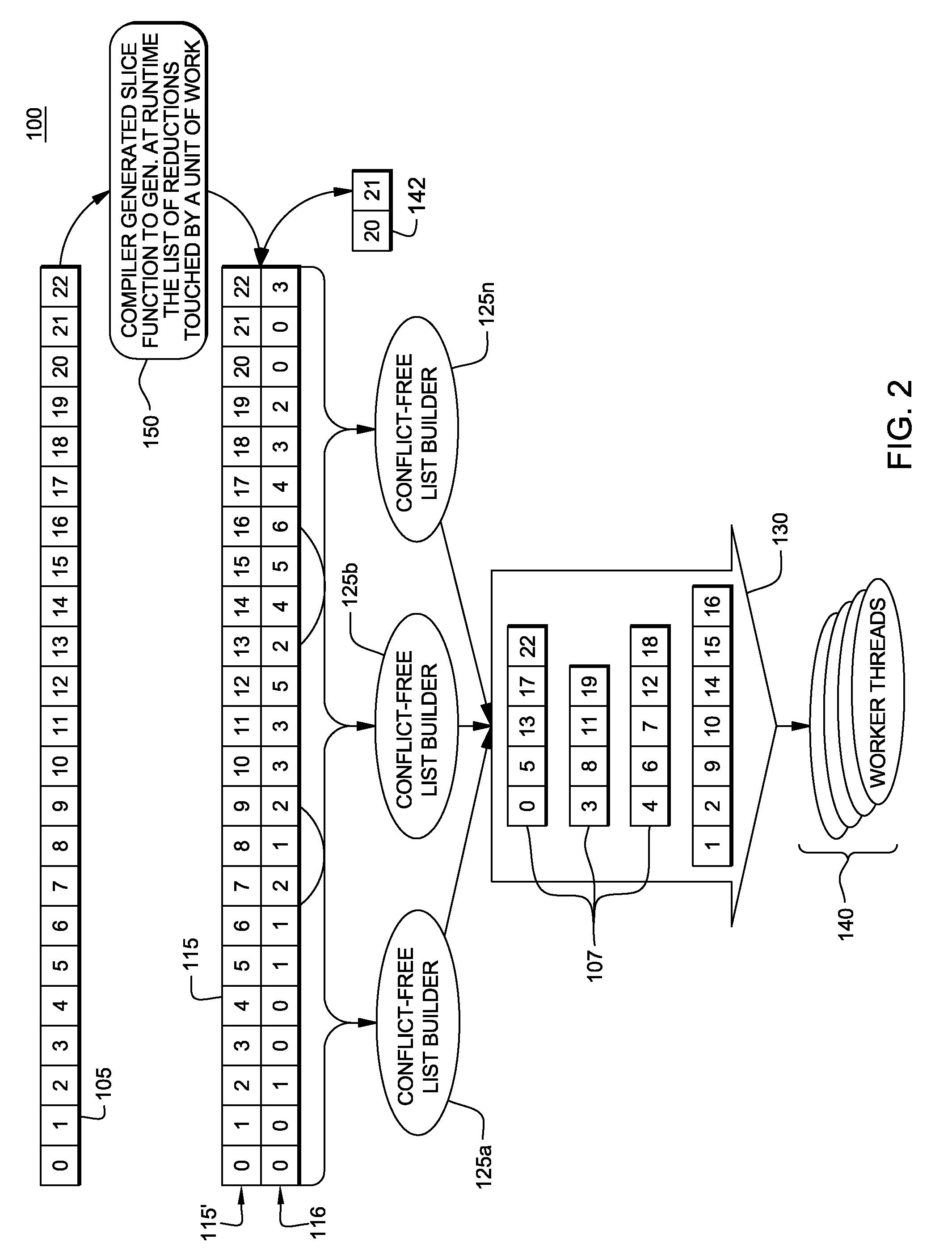Parallelization of irregular reductions via parallel building and exploitation of conflict-free units of work at runtime
a technology of parallel building and parallel reduction, which is applied in the field of parallel speedup and parallel reduction of irregular reductions, can solve the problems of large hardware modification to the architecture, large hardware footprint of software approach, and general slowness of software approach to solve irregular array reduction patterns, etc., and achieve good parallel speedup and maintain the memory footprint of the original application.
- Summary
- Abstract
- Description
- Claims
- Application Information
AI Technical Summary
Benefits of technology
Problems solved by technology
Method used
Image
Examples
Embodiment Construction
[0032]Optimizing compilers optimize the code of a computer program by rearranging the code sequences to take maximum advantage of the computer architecture and the specific configuration of the individual computer program.
[0033]Optimizing compilers permit efficient object code to be emitted given a particular piece of source code to be compiled. Source code that includes loops is typically the subject of optimization in compilers. For a given segment of source code containing loops and for a given target machine micro architecture, cache geometry and parallel processing capability, the loop allocation of an optimizing compiler is used to attempt to determine a collection of object code loop nests which will give efficient performance at an acceptable compilation-time cost.
[0034]Thus, an aspect of the present invention is to provide an optimizing compiler device, a compiling method, a compiler program and a recording medium, which are capable of performing parallelization of irregula...
PUM
 Login to View More
Login to View More Abstract
Description
Claims
Application Information
 Login to View More
Login to View More - R&D
- Intellectual Property
- Life Sciences
- Materials
- Tech Scout
- Unparalleled Data Quality
- Higher Quality Content
- 60% Fewer Hallucinations
Browse by: Latest US Patents, China's latest patents, Technical Efficacy Thesaurus, Application Domain, Technology Topic, Popular Technical Reports.
© 2025 PatSnap. All rights reserved.Legal|Privacy policy|Modern Slavery Act Transparency Statement|Sitemap|About US| Contact US: help@patsnap.com



